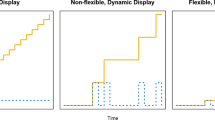Abstract
STUDIES of sexual selection1 commonly examine female mating preferences or intermale competition2, but there have been few experimental tests of factors controlling why these, the 'typical courtship roles', exist in the first place. Although the distribution of mates can affect sexual selection, and thus the degree of sexual competition3, it is the typically lower investment in offspring by males relative to females that is thought to determine the usually greater potential mating frequency, and hence greater sexual competition, among males4,5. Reversal in the typical courtship roles is, therefore, expected to occur where there is high male parental investment4. The courtship roles are generally considered to be fixed for any particular species because of the usually inflexible nature of adaptations for parental care. Certain katydids (Orthoptera: Tettigoniidae)6–8, however, show intraspecific variation in these roles. This has been suggested to result from variation in the relative importance of male parental investment9 in the production of offspring. Male parental investment comprises the nutritional value of the spermotophore eaten by the female. When other food is scarce therefore, females are predicted to compete sexually for males and their offerings7,8,10. Here we confirm this prediction and show that an increase in food from a low level results in a change from role-reversal to the typical roles; this supports the theory4,5 that variation in relative male parental investment controls sexual differences.
Similar content being viewed by others
References
Darwin, C. The Descent of Man and Selection in Relation to Sex (Murray, London, 1871).
Bradbury J. & Andersson, M. B. (eds) Sexual Selection: Testing The Alternatives (Wiley, Chichester, 1987).
Emlen, S. T. & Oring, L. W. Science 197, 215–222 (1977).
Williams, G. C. Adaptation and Natural Selection (Princeton University Press, 1966).
Trivers, R. L. in Sexual Selection and the Descent of Man, 1871–1971 (ed Campbell, B.) 136–179 (Aldine, Chicago, 1972).
Gwynne, D. T. Evolution 38, 1011–1022 (1984).
Gwynne, D. T. Behavl Ecol. Sociobiol. 16, 355–361 (1985).
Simmons, L. W. & Bailey, W. J. Evolution (in the press).
Gwynne, D. T. Behavl Ecol. Sociobiol. 23, 373–377 (1988).
Thornhill, R. in Evolution of Animal Behavior: Paleontological and Field Approaches (eds Nitecki, M. H. & Kitchell, J. A.) 113–135 (Oxford, New York, 1986).
Bowen, B. J., Codd, C. G. & Gwynne, D. T. Aust. J. Zool. 32, 23–31 (1984).
Gwynne, D. T. Nature 307, 361–363 (1984).
Simmons, L. W. Behavl Ecol. Sociobiol. (in the press).
Davies, P. M. & Dadour, I. R. Ecol. Ent. 14, 467–469 (1989).
Gwynne, D. T. Am. Nat. (in the press).
Gwynne, D. T. Science 213, 779–780 (1981).
Rentz, D. C. F. & Clyne, D. J. Aust. ent. Soc. 22, 155–160 (1983).
Gwynne, D. T. & Bailey, W. J. Behaviour 105, 202–223 (1988).
Wade, M. J. Am. Nat. 114, 742–746 (1979).
Wade, M. J. in Sexual Selection: Testing the Alternatives (eds Bradbury, J. W. & Andersson, M. B.) 197–207 (Wiley, Chichester, 1987).
Sutherland, W. J. in Sexual Selection: Testing the Alternatives (eds Bradbury, J. W. & Andersson, M. B.) 209–219 (Wiley, Chichester, 1987).
Parker, G. A. & Simmons, L. W. Ethology 82, 3–26 (1989).
Main, A. R. & Carrigy, M. A. West Aust. Nat. 4, 49 (1953).
Author information
Authors and Affiliations
Rights and permissions
About this article
Cite this article
Gwynne, D., Simmons, L. Experimental reversal of courtship roles in an insect. Nature 346, 172–174 (1990). https://doi.org/10.1038/346172a0
Received:
Accepted:
Issue Date:
DOI: https://doi.org/10.1038/346172a0
- Springer Nature Limited
This article is cited by
-
Sexual selection on a female copulatory device in an insect with nuptial gifts
Behavioral Ecology and Sociobiology (2023)
-
Deceived, but not betrayed: static allometry suggests female ornaments in the long-tailed dance fly (Rhamphomyia longicauda) exaggerate condition to males
Evolutionary Ecology (2022)
-
Degree of anisogamy is unrelated to the intensity of sexual selection
Scientific Reports (2021)
-
Decoupling of female phonotaxis and mating propensity in a tree cricket
Behavioral Ecology and Sociobiology (2021)
-
The impact of social structure on breeding strategies in an island bird
Scientific Reports (2020)





